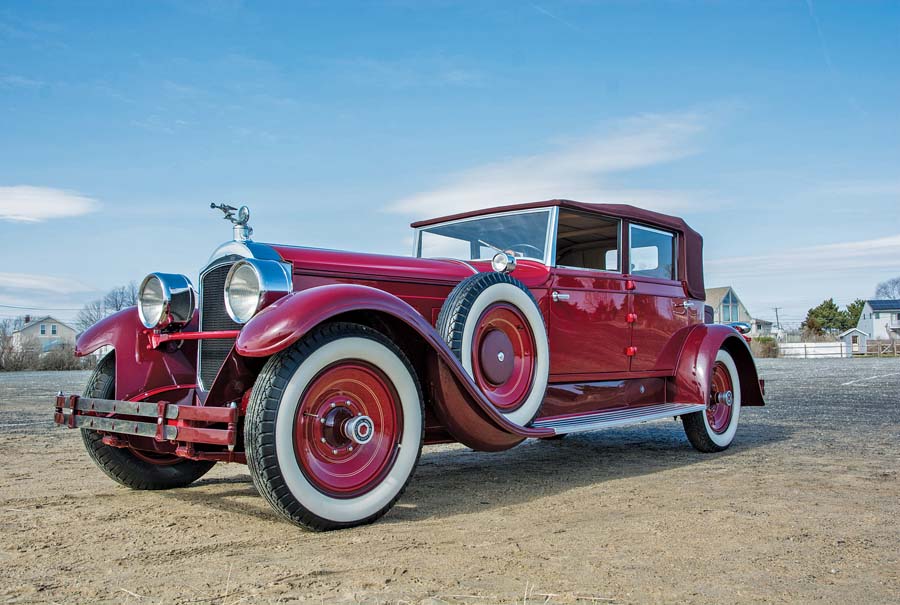Chassis Number: 227594
Buying a Packard in 1928 was a no-questions-asked statement that you had arrived. But if it wasn’t enough to own one of the finest cars on the road, one could opt for custom coachwork. Relatively few Packards were fitted with such princely attire, and it is a very rare to come across one clothed at the legendary Walter M. Murphy Company of Pasadena, CA. It offered the attractive lines and delicately thin cast-brass pillars of Murphy’s recently introduced “Clear Vision” Sedan bodywork, while the Convertible Sedan offered the convenience of open motoring with the full weather protection of a sedan.
Vintage Motorcars of Westbrook, CT, completed the no-expense-spared restoration, finishing the car in its lovely deep red with maroon coach lines and burgundy top over rich brown leather. This is a rare opportunity to acquire what is one of the few remaining Murphy-bodied Packards.
Ripe for shows or tour — and eligible for countless CCCA and AACA events — this is an excellent addition to any collection.

